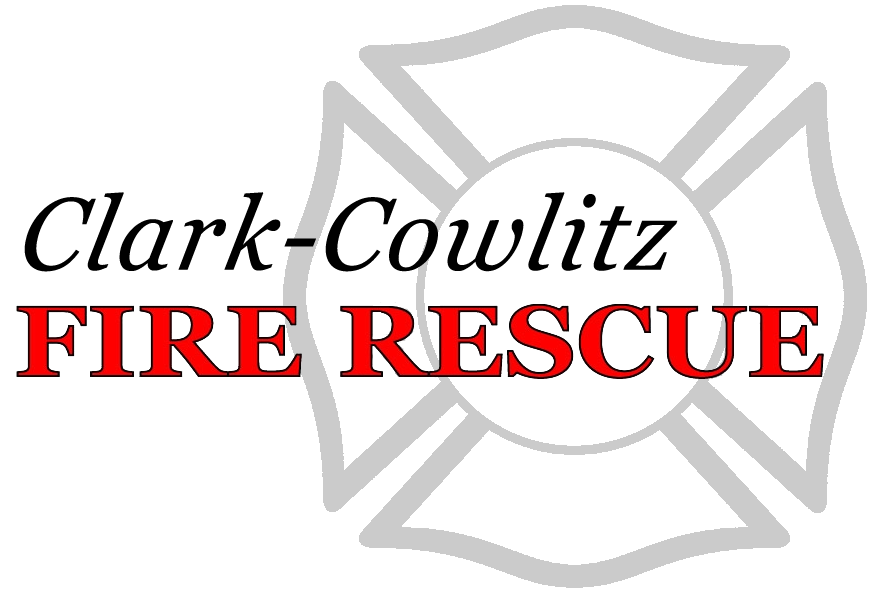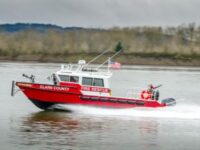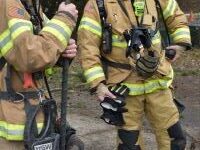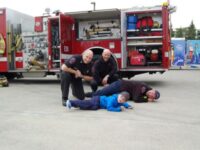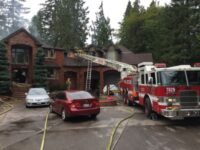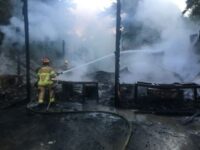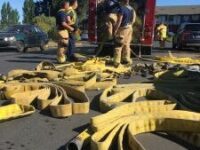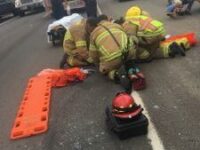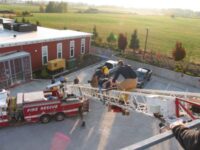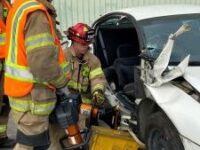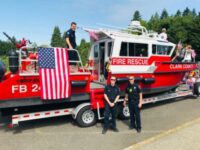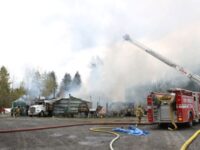PROUDLY PROTECTING LIFE AND PROPERTY THROUGH PREPARATION, PREVENTION, EDUCATION AND RESPONSE.
- Board of Commissioner Meetings
Regular Board meetings are held the 2nd and 4th Thursday of each month. Meetings begin at 4:00 p.m. and are held at Station 21 located at 911 N 65th Avenue in Ridgefield, WA. Any variations to this schedule will be posted here.
You may join the meeting virtually by clicking on the meeting link below or going to join.zoom.us and entering Meeting room ID # 262 342 327, Password # 492020
Join Zoom Meeting – Thursday, 11th of April at 4:00 p.m.
Published in accordance with RCW 84.55.120 & the Open Public Meetings Act RCW 42.30
Public Meeting Notice
Clark-Cowlitz Fire Rescue
General Board Meeting
Monday evening Truck 21, Engine 23, AMR and Ridgefield Police Department responded to a rollover vehicle down a 40 foot embankment. The patient had to be transported with multiple injuries. This is the second time in the last few weeks where our highly trained TRT members have made a difference in someone's life! ... See MoreSee Less



- Likes: 0
- Shares: 11
- Comments: 5
5 CommentsComment on Facebook
Great work 👏❤️
Thank you Workers of Truck 21, Engine 23, AMR and the police department for all you do!
Where?
Lucky they had a roll bar!
Heavy extrication at its finest. Solid work boys!!
We have an employment Opportunity for an Accounting Assistant! ... See MoreSee Less

Employment Opportunity – Accounting Assistant – Clark County Fire Department
clarkfr.org
Employment Opportunity – Accounting Assistant Open Position: Accounting Assistant Salary: $5,356 – $6,028 per month Job description Application The Accounting Assistant position is non-represented...0 CommentsComment on Facebook
Emergency Responses
4/8/24 - 4/14/24
#CCFR #YourFireDepartment
... See MoreSee Less

0 CommentsComment on Facebook
Emergency Responses
4/1/24 - 4/7/24
#CCFR #YourFireDepartment
... See MoreSee Less

0 CommentsComment on Facebook
Our office is hosting a sign-up event on April 5th in Ridgefield, Washington, to help property owners learn about and enroll in the property tax exemption program. The exemption program is designed to reduce property tax liability for eligible senior citizens and people with disabilities. Specialists will be available at the event to answer questions and assist with enrollment. Hope to see you there! ... See MoreSee Less

0 CommentsComment on Facebook
Finance Friday? April seems like the time to talk taxes, right? Have you wondered about local tax levies and how your Fire District is funded? Unfortunately taxes, like so many things in government are complicated. Here are some answers to common questions:
Where does the Fire District Money Come From?
Almost all of the Fire District Funds come from Property Tax levies (taxes levied on property based on the property value) Other funding for small and specific programs comes from occasional grants and limited fees for services like Fire Inspections and new building Plans Review. Our CARES and Co-Response programs are currently funded outside of District taxes by a variety of community partners. Generally 90+% of Fire District revenue comes from property tax levies.
Why do Fire Districts keep asking voters to approve tax levies? Is this just more taxes?
Regular Fire District levies cannot exceed $1.50 per $1,000 of assessed property value in Washington State. Some Districts, including CCFR, also collect an EMS levy at .50 or less per $1,000 of assessed value to provide paramedics and advanced emergency medical care. EMS levies automatically expire and go away, unless they are renewed by voters (usually on a 6 year cycle). Each year taxing districts (including Fire Districts) can only collect "new" tax dollars from newly constructed property and tax collections are limited to 1% more total revenue than they collected the year before on existing property. The result is that the tax rate declines over time as property values grow with inflation, usually more than the 1% allowed for revenue growth. As the tax rate drops form $1.50 to $1.45, $1.40, $1.30 and so on, the District’s ability to collect 1% more eventually can't keep up with the cost of inflation. After that we have to ask voters to consider a "lid lift" to raise the tax rate back up closer to the $1.50 cap. We budget prudently and plan for inflation that outpaces our tax revenue, but usually every 4-6 years we have to ask voters to consider lifting the tax rate back up to the original rate in order to maintain the same level of service.
More questions about your fire district taxes? Follow us here and we'll provide more details in coming days and weeks. Also, feel free to reach out at any time with questions or concerns you have.
... See MoreSee Less

2 CommentsComment on Facebook
An excellent explanation of how funding for the fire districts and ems districts in Washington State work. Thank you!
The way I see it, you either want emergency services or you don’t. The only way to get a dependable and quality emergency service is to pay for it. It’s not asking a whole lot I don’t think. I’m not affiliated with the department, but I am a first responder and even if I wasn’t I see the value in paying for the services.
